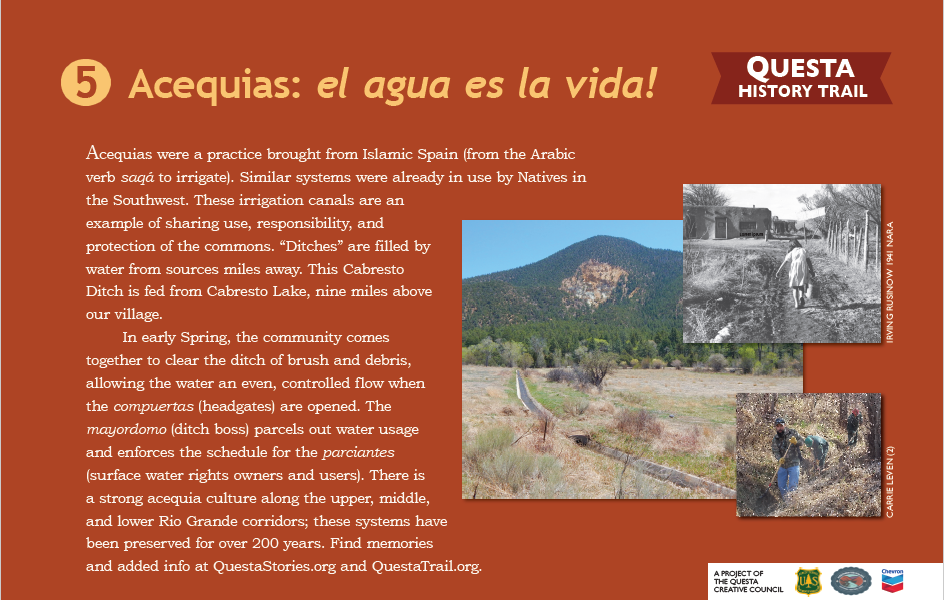Sign #5 Text:
Acequias were a practice brought from Islamic Spain (from the Arabic verb saqá, to irrigate). Similar systems were already in use by Natives in the Southwest. These irrigation canals are an example of sharing use, responsibility, and protection of the commons. “Ditches” are filled by water from sources miles away. This Cabresto Ditch is fed from Cabresto Lake, nine miles above our village.
In early spring, the community comes together to clear the ditch of brush and debris, allowing the water an even, controlled flow when the compuertas (headgates) are opened. The mayordomo (ditch boss) parcels out water usage and enforces the schedule for the parciantes (surface water rights owners and users). There is a strong acequia culture along the upper, middle, and lower Rio Grande corridors; these systems have been preserved for over 200 years. Find memories and added info at QuestaStories.org and QuestaTrail.org.
Acequias were a practice brought from recently-Islamic Spain, where the word originated in the desert climates of north Africa (from the Arabic verb “saqá,” to irrigate). Similar systems were already in use by Natives in the American southwest.
The first Spanish settlers to ‘the new world’ came from a country that had been part of the Islamic Empire for 500 years, until 1492, when the Catholic Queen Isabella gained the throne. It was natural for early New Mexican pioneers to carry on Islamic practices in their land stewardship.
While the natives of this high desert region practiced the same form of water management, it was the Spanish settlers who developed the acequia system into the first form of governance the pioneer communities had. Water was so crucial to survival, that the mayordomos who were elected to manage the distribution to the many parciantes held an important role in the early settlements.
This role is still a respected and important one in the small villages of the Rio Grande Valley. While not as many residents farm or ranch as they used to, the acequias are an important touchstone to the area’s heritage, and still very important in practice to assure fair distribution of a shrinking resource. Maintenance has become even more important as the climate warms.
What can you add to this story?
Did you grow up cleaning the acequia each spring?
Did your parents caution you that La Llorona would get you if you played too close to the ditch?
Did you tell your own children this tale?
Listen to the local memories on our oral-history cache at QuestaStories.org and add your own knowledge and memories!
Acequia culture is alive and well in New Mexico. Stay updated and find information at https://lasacequias.org/


